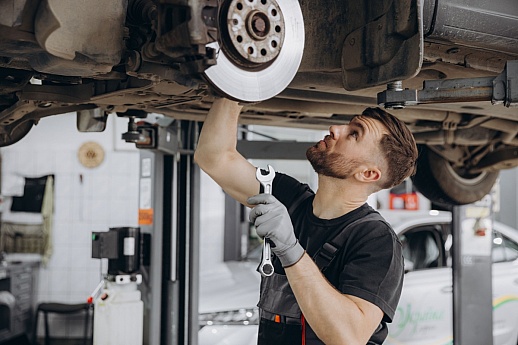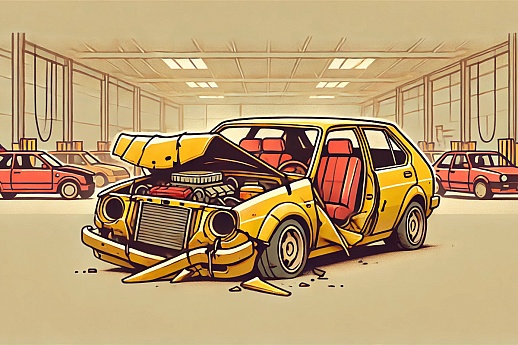What Are Car Blind Spots & How to Deal with Them
Navigating the roads safely involves understanding and managing car blind spots. These are areas around your vehicle that remain hidden from your view while driving, even when using mirrors correctly. Often unnoticed, blind spots can conceal other vehicles, cyclists, or pedestrians, heightening the chances for collisions.
This guide will delve into the concept of blind spots in driving, exploring their impact and offering strategies to effectively deal with them. The aim is to equip you with the knowledge to identify and handle these hidden zones, thereby enhancing your driving skills.
What Are Car Blind Spots?
Car blind spots are areas around your vehicle that are not visible to you while driving, even when using the rearview and side mirrors correctly. From the driver's seat, your primary field of vision includes what's directly ahead and what's visible through your mirrors. Yet, the design of every vehicle inherently includes areas your eyes cannot reach – your blind spots.
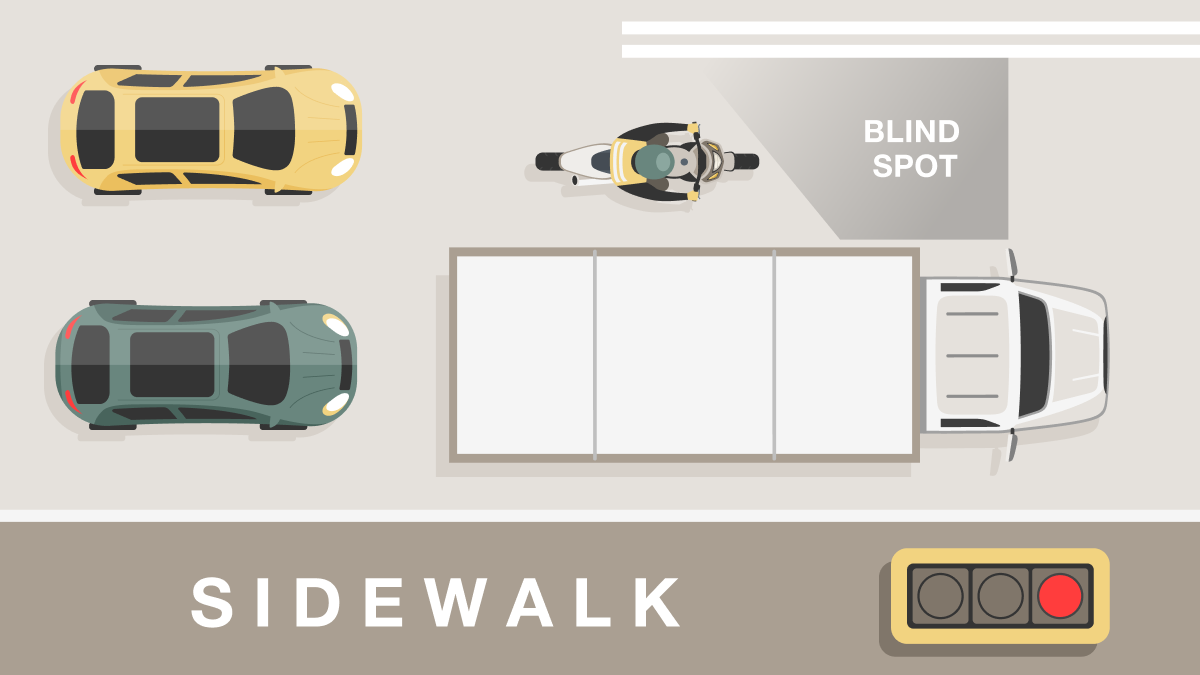
These hidden zones include:
- A-Pillar: This is the frame on either side of the windshield. It supports the roof and is a common blind spot that can obstruct the driver's view of pedestrians, oncoming vehicles, and road signs, especially at intersections.
- B-Pillar: Located between the front and rear doors (on vehicles with four or more doors), the B-pillar supports the vehicle's roof and can create a blind spot that affects the driver's side-to-side vision. This area may obscure parts of adjacent lanes or pedestrians approaching from the side.
- C-Pillar: Found behind the rear doors and next to the rear window, the C-pillar can significantly obstruct the view of vehicles approaching from the rear, especially when merging lanes or changing lanes.
These concealed areas create potential safety risks – vehicles, cyclists, or pedestrians might be overlooked, raising the chance of accidents.
Specific Blind Spot Areas for Different Vehicles
Unfortunately, all cars have blind spots. However, vehicle blind spots vary based on the model, make, and type of car, with some having larger blind spots than others.
Here's a brief overview of how car blind spots can vary based on the type of vehicle you’re driving:
- Sedans: Watch for hidden areas at the rear corners and just beside/behind the driver. These spots are where others vanish from view, especially when you're turning or changing lanes.
- SUVs: The view directly behind can be blocked by the SUV's height and size. Its wide body also means larger blind spots at the sides and back corners.
- Trucks (Pickups): The truck bed creates long blind spots along the sides, and the area directly behind the tailgate is often obscured, making it hard to see objects or vehicles close behind.
- Minivans: Blind spots around the rear side windows and pillars can hide approaching traffic, especially when merging. The front pillars and dashboard area also obstruct the view of pedestrians and smaller vehicles during tight turns and at intersections.
What Are the Dangers Associated with Car Blind Spots?
Navigating the road can sometimes feel like a game of hide and seek, especially when it comes to blind spots. These concealed areas around your vehicle can lead to a variety of dangers, including:
- Lane Change Accidents: Failing to detect a vehicle in your blind spot while changing lanes can result in side collisions. For instance, merging into an adjacent lane without noticing a car in your blind spot can lead to a dangerous accident.
- Collisions with Motorcycles and Bicycles: Motorcycles and bicycles are smaller and easily concealed in blind spots. A failure to check blind spots before making a turn or changing lanes can lead to collisions with these vulnerable road users.
- Pedestrian Hazards: Blind spots when driving can extend to areas near the front of your vehicle. Failing to notice pedestrians in these areas while maneuvering, especially during parking or making sharp turns, can lead to accidents involving pedestrians.
- Difficulty in Navigating Turns: Blind spots in cars can hinder your ability to see vehicles approaching from the rear when making turns. This can lead to delays in executing turns, impeding traffic flow and potentially causing rear-end collisions.
- Parking Lot Risks: Failing to check for pedestrians or other vehicles in blind spots while backing out of or into a parking space can result in accidents, especially in crowded parking lots.
- Tailgating and Rear-End Collisions: The inability to see vehicles following closely behind in your blind spot can lead to sudden braking or lane changes, increasing the risk of rear-end collisions.
- Highway Merging Challenges: When entering a highway, failing to spot fast-approaching vehicles in your blind spot can make merging into traffic hazardous. This may lead to dangerous situations where vehicles have to brake or swerve to avoid collisions.
- Unexpected Obstacles: Car blind spots can hide unexpected obstacles on the road, such as debris or animals. Failing to notice these obstacles in time can lead to evasive maneuvers or accidents.
How to Check Car Blind Spots
Before you hit the road, you should familiarize yourself with the blind spots that are specific to the type of vehicle you are driving. To thoroughly identify blind spots around your car, you should use the following tests:
- Parked Car Test for Blind Spots: Use a parking lot to observe when another vehicle passes by and disappears from one mirror to the next or requires a head turn to keep in sight. This helps identify blind spots, particularly those between mirror visibility and peripheral vision.
- Stationary Object Placement Test: Place an object, like a cone, around your parked car in potential blind spot areas. From the driver's seat, attempt to locate the object using mirrors, adjusting its position to explore the extent of blind spots.
- Helper Walk-Around Method: Have someone walk around your stationary vehicle as you watch through your mirrors. Note when they disappear from view, highlighting the blind spots around your car.
Best Practices to Reduce the Risks Associated with Blind Spots
As you take the wheel, safety becomes your top priority. In this section, we'll delve into the practical techniques for reducing blind spots while driving, ensuring a secure and confident journey on the road.
Adjust Mirrors
Adjusting your mirrors properly enhances your field of view, reduces blind spots, and encourages safer driving. To adjust the driver’s side mirror, sit in your normal driving position and shift the mirror outward. The side of your car should barely be visible on the inner edge of the mirror.
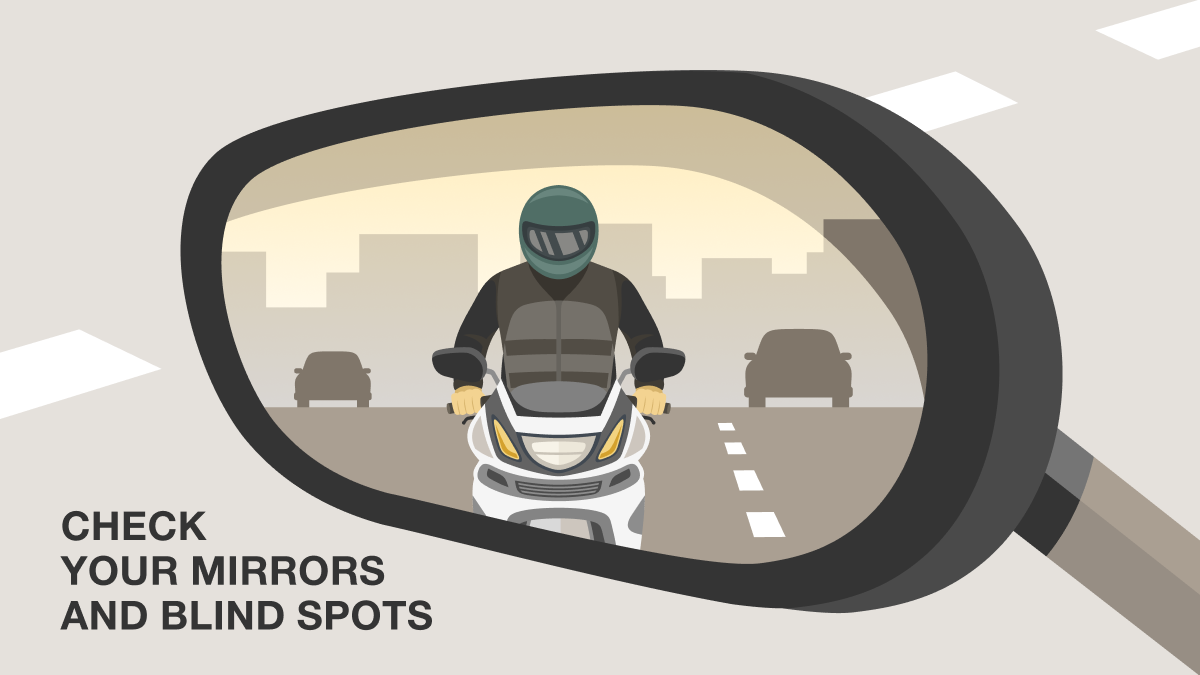
The passenger side mirror can be adjusted in the same way. Sit in your regular position and adjust the mirror until the side of your car is barely visible on the inner edge. For the passenger side mirror, you will likely need to adjust the mirror farther out to provide a better view of the adjacent lane.
Finally, the rearview mirror should provide a clear, centered view out of the back window. As a best practice, avoid tilting the rearview mirror – it is only for viewing the rear of the car.
Adjust Seating Position
Another best practice to reduce blind spots is to properly adjust your seat to increase visibility. For taller drivers, lower the seat as much as possible to gain a wider view through the front and side windows. This will minimize the blind spot created by the A-pillar and rearview mirror. For shorter drivers, raise the seat to increase your line of sight over the dashboard and through the windows.
Finally, adjust your backrest so it is at a slight recline, around 100 to 110 degrees. This angle promotes a wider field of view, allowing you to see more of the road and mirror without straining your neck.
Check Over Your Shoulder
Turning your head for an over-the-shoulder check might seem like a simple move, but it's another strategy that can greatly improve your visibility and reduce blind spots. A good rule of thumb is to always check over your shoulder before changing lanes, turning, and merging.
Before turning your head, quickly glance at your rearview and side mirrors to get an initial assessment of traffic conditions. Then, turn your head to look over your shoulder in the direction you intend to move. This action should be quick but thorough, ensuring you have a clear view of any vehicles or obstacles in your blind spot.
Finally, quickly bring your focus back to the front. Prolonged over-the-shoulder checks can lead to front-end drift or missing other hazards ahead.
Remember: keep both hands on the wheel while performing the check to maintain control of the vehicle. Also, conduct your over-the-shoulder glance well before you plan to change lanes or turn, giving yourself ample time to react to any detected obstacles.
Install Blind Spot Mirrors
Aside from adjusting your mirrors to reduce blind spots, you can also purchase accessories to promote safer driving. Installing blind spot mirrors on your vehicle's side mirrors enhances your ability to detect vehicles, cyclists, or pedestrians that may otherwise go unnoticed.
Select a mirror size that complements your vehicle's existing side mirrors without obstructing them. Round or oval mirrors are popular choices that provide a wide-angle view. Consider the mirror's curvature as well; a more convex shape offers a broader field of vision.
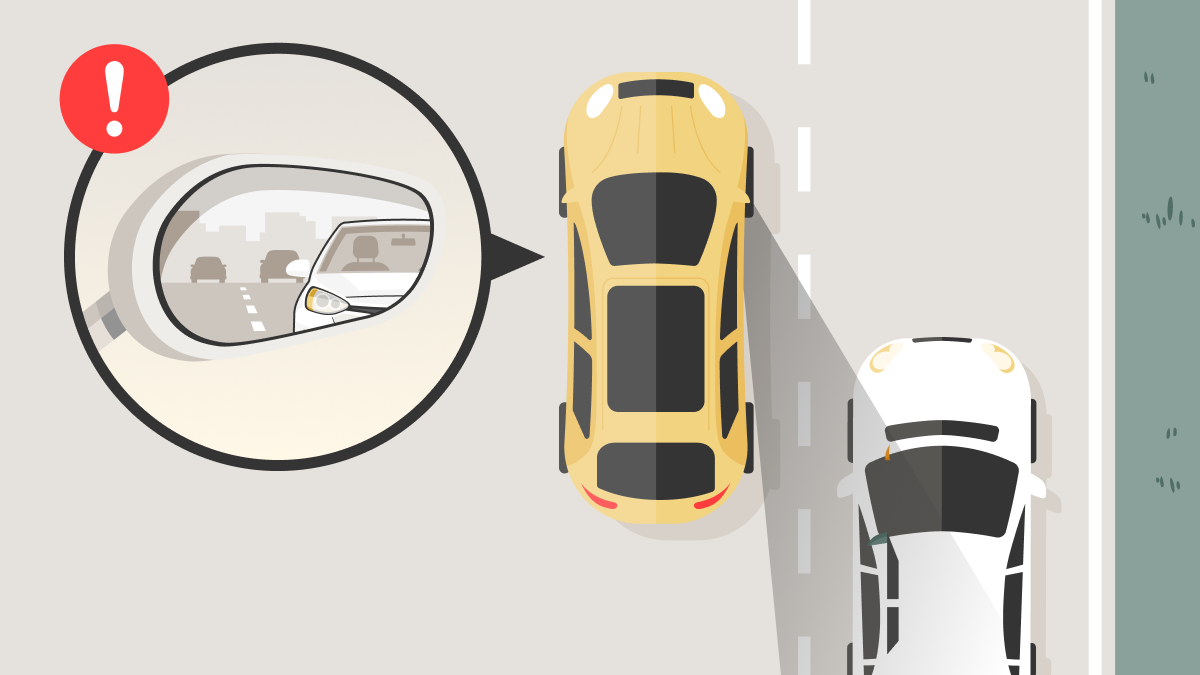
Opt for mirrors that can be adjusted independently of the vehicle’s main side mirrors. This feature allows for fine-tuning of the viewing angle, maximizing the area covered by the mirror. Also, ensure the adhesive is weather-resistant and strong enough to hold the mirror securely over time.
Before permanently attaching the blind spot mirror, test different placements by temporarily holding the mirror in place with tape. Adjust your seat to your driving position, and ensure the blind spot mirror provides a clear view of the areas your regular side mirror doesn't cover. Once you’ve found the ideal spot, remove the backing and apply the mirror firmly.
Install a Rearview Camera
Installing an aftermarket rearview camera can be a practical solution for vehicles without this feature, enhancing safety by reducing rear blind spots. For those driving older models predating the widespread inclusion of rearview cameras, here's what to consider when adding one to your car’s bumper or license plate:
- Compatibility: Ensure the aftermarket camera system you choose is compatible with your vehicle. While universal systems are available, some are tailor-made for specific vehicle types or models, offering a seamless integration.
- Camera Quality: Opt for a camera that offers high resolution and night vision capabilities. Clear visibility in various lighting conditions is crucial, particularly for night driving, ensuring obstacles are visible regardless of the time of day.
- Display Options: You might prefer a system that integrates with your car's existing dashboard display. Alternatively, some systems require installing a separate screen. Modern options include systems that can connect to smartphones or tablets, offering flexibility in how you view the camera feed.
- Wiring: Consider the installation process. Wireless systems provide ease of installation without the need for extensive wiring, whereas wired systems might offer a more stable and reliable connection.
For vehicles manufactured before the adoption of rearview cameras as standard equipment, retrofitting your car with an aftermarket rearview camera can significantly improve visibility. This is especially useful when reversing, as it makes obstacles, other vehicles, and pedestrians that are otherwise hidden in your blind spot easily visible, enhancing overall safety.
Utilize Car Blind Spot Detection Technology
In addition to rearview camera technology, many modern vehicles now feature Blind Spot Detection (BSD) systems. These systems are prebuilt into many newer model vehicles and come at little to no extra cost when buying or leasing. Blind spot detection systems use sensors or cameras positioned around the vehicle to monitor areas that are typically out of the driver’s direct line of sight.
When these sensors detect an object, such as another vehicle, cyclist, or pedestrian, in a blind spot, the system alerts the driver through visual or auditory signals. When the system detects an object in your blind spot, it typically alerts you via a flashing light on the corresponding side mirror. Some systems also use auditory alarms or vibration warnings if you signal a turn while something is detected in your blind spot.
By warning drivers of hidden dangers, blind spot detection can significantly reduce the likelihood of side-swiping incidents or other accidents caused by changing lanes or merging.
Use Turn Signals
Using turn signals is more than a courtesy on the road; it's a proactive strategy to reduce blind spots and prevent accidents. Turn signals are a universal language among drivers, indicating your next move and allowing others to adjust accordingly.
By signaling early, you give drivers, cyclists, and pedestrians adequate time to react, whether you're changing lanes, turning at an intersection, or merging onto a highway. The timing of your signal is as important as the action itself:
- Lane Changes: Signal at least three seconds before you start changing lanes. Also, check your mirrors and perform an over-the-shoulder check to ensure the lane is clear.
- Turning at Intersections: Begin signaling at least 100 feet before the turn. This distance increases on highways or in high-speed areas, allowing others more time to prepare for your action.
- Merging: Signal at least three seconds before you begin merging, giving drivers in the lane you're entering enough notice to adjust their speed or position if necessary.
- High-Speed Roads: Increase your signaling distance to give fellow drivers more reaction time. A good benchmark is signaling five to seven seconds before your maneuver.
Remember: keep your turn signal on throughout the entire maneuver, not just during the initial indication.
Avoid Driving in Blind Spots
Finally, it’s not enough to reduce your own blind spots – if you can't see other drivers, they likely can't see you either. To help make the road a safer place for everyone, steer clear of others’ blind spots.
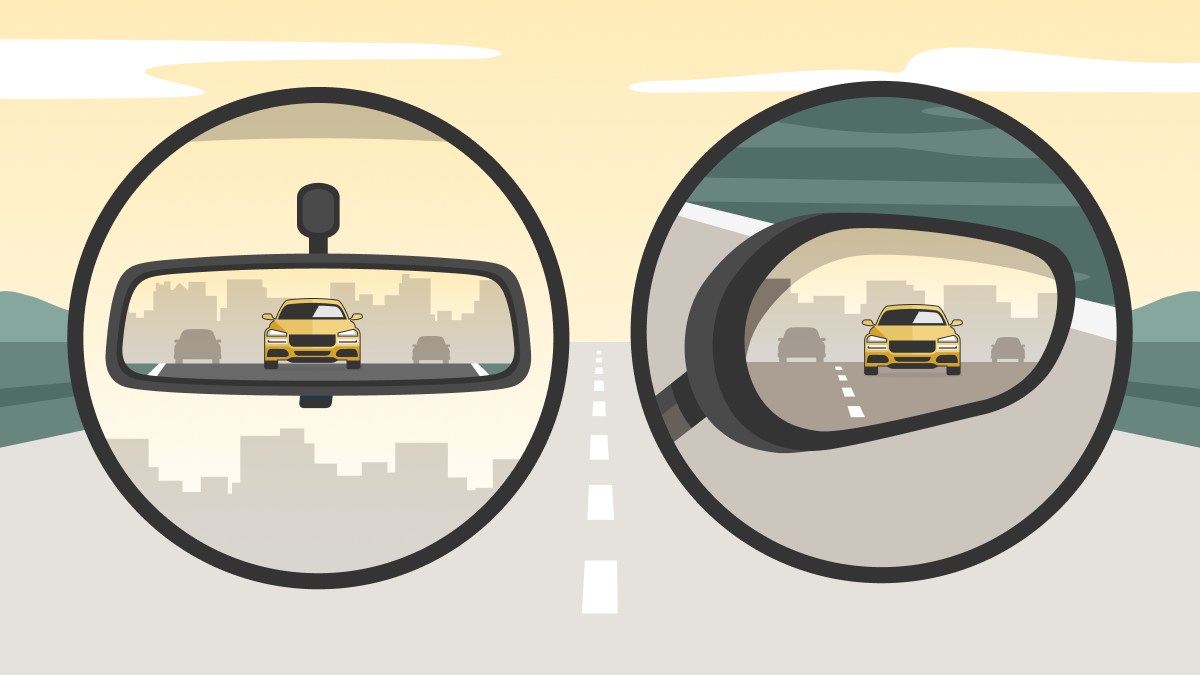
Here are some strategies that can help you avoid driving in others’ blind spots:
- Stay ahead or behind trucks, buses, and vans. These vehicles have significant blind spots on all four sides, so avoid cruising on the sides whenever possible.
- Avoid the driver’s left and right shoulders for smaller vehicles. Keep a safe distance ahead or behind to remain visible in their side mirrors.
- Ensure you can see the driver's face in their mirrors. If you can't see them, they likely can't see you.
- When passing, do so quickly and safely to minimize the time spent in the blind spot. Signal your intentions well in advance.
- Avoid driving parallel to another car for too long, as you may be in their blind spot. Either speed up or slow down to find a safer position.
- When behind another vehicle, ensure there is enough space for them to see you in their rearview mirror. A good rule of thumb is the three-second rule, adjusting for speed and road conditions.
Bottom Line
Minimizing car blind spots through mirror adjustment, shoulder checks, and technology use contributes to safer driving. Regularly practicing these measures, along with defensive driving, enhances road safety for all. Awareness and proactive management of blind spots are key to preventing accidents and ensuring a safer environment on the road.
Frequently Asked Questions
In this section, we tackle additional questions about car blind spots that you might have.
How Many Blind Spots Does a Car Have?
The number of blind spots in a car can vary. Generally, small cars have two primary blind spots (left and right sides), while larger vehicles like trucks have four main blind spots - front, rear, and both sides.
In trucks, these are often referred to as 'no-go zones' due to the high risk associated with them. The larger the vehicle, the more extensive the blind spots are, especially on the sides and rear.
Does Every Car Have a Blind Spot?
Yes, every car has blind spots. These are areas around the vehicle that cannot be directly seen by the driver while in the normal driving position, even with the use of side and rearview mirrors. The existence of blind spots is due to the structural design of vehicles, including elements like the roof, floor, and pillars.
When Should I Check My Car Blind Spots?
Here are some key situations where checking your car blind spots is particularly useful:
- Before changing lanes, ensure no vehicle is in the lane you are moving into.
- When merging onto highways or other roads, particularly when speeds are increasing.
- Before making turns, detect any unnoticed vehicles, bicyclists, or pedestrians.
- While backing out of a parking space or driveway to avoid collisions with unseen obstacles or moving vehicles.
How Often Should I Check Blind Spots?
It's advisable to check your mirrors every five to seven seconds to maintain awareness of your surroundings and perform blind spot checks whenever you are about to change lanes, merge, or make turns. Consistent checking helps in identifying and responding to potential hazards timely.
Can Car Blind Spots Be Completely Eliminated?
While it is challenging to completely eliminate blind spots, certain measures can significantly reduce them. Adjusting your mirrors correctly is one way to minimize blind spots. Technology like blind spot detection systems, including cameras and radar, can also help in detecting objects in these areas. However, even with these aids, car blind spots cannot be entirely eliminated, and driver vigilance remains key.
Sources
Institute of Physics. “Study on the Influence of Vehicle Blind Spot on Driving Safety.” Accessed Jan. 18, 2024.
National Safety Council. “Pedestrians” Accessed Jan. 18, 2024.
Glass Doctor. “Adjust Your Car Mirrors for Maximum Visibility and Safety.” Accessed Jan. 18, 2024.
J.D. Power. “What is a Blind-Spot Monitor?” Accessed Jan. 18, 2024.

